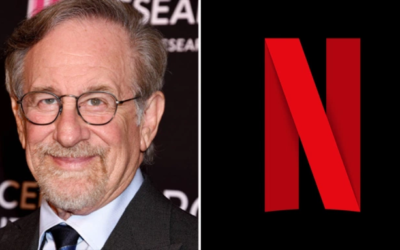Source: Deadline
Disney and Pixar’s most recent animated feature “Lightyear”, inspired by the character Buzz Lightyear from their flagship “Toy Story” franchise, is being seen by many as a return to form for the studio that produced the likes of “Finding Nemo” and “Inside Out”. The film will be the first in over two years that will premiere exclusively in theaters, as previous works “Soul”, “Luca”, and “Turning Red” were forced to instead come out on Disney+ due to concerns relating to the ongoing COVID-19 pandemic (the last film Pixar released to theaters, “Onward”, also had its theatrical run far sooner than desired to due to the pandemic). For many, getting to see “Lightyear” on the big screen will be quite an event, with industry analysts predicting the film will accumulate anywhere between $90 and $120 million over its opening weekend at the domestic box office. International ticket sales will certainly bring that total to an even higher number, but of the global markets that will provide “Lightyear” with theatrical exhibition, none of them will include Saudi Arabia, Malaysia, and a handful of other nations that have chosen not to allow the film to be screened.
As Disney began to release “Lightyear” into one international market after another, it was announced that several countries have not been given distribution certificates that would permit the film to be shown in their theaters. Many of these nations are located in the Middle East, including Saudi Arabia, the UAE, Bahrain, Egypt, Kuwait, Oman and Qatar, but Indonesia and Malaysia, located near Southeast Asia in the Pacific Ocean, have also refused to exhibit the film. In addition, the film has not yet been dated for a release in China, one of the world’s largest movie-going markets, and although no official reasons have been provided to explain why these bans have been put into place, many believe that it’s due to the inclusion of LGBTQ+ content in the film (in order for a Chinese release, cuts to “Lightyear” would have to be made, much like Warner Brothers’ “Fantastic Beasts: The Secrets of Dumbledore”), as has been the case with previous films that were also banned in these countries.
The content in question revolves around the character of Alisha Hawthorne (played by Uzo Aduba), a commanding officer and one of protagonist Buzz Lightyear’s (Chris Evans) closest friends. In the film, Hawthorne is shown at one point to be embracing another woman in a romantic manner, allowing the film to explicitly confirm the character being part of the LGBT community. Although the characters’ relationship was never questioned at any point during the film’s production, a kiss between the two was originally intended to be cut, only to be reinstated at the demand of several Pixar employees following the controversy surrounding Disney CEO Bob Chapek and how he had chosen to react to the “Don’t Say Gay” bill that had recently been passed in the state of Florida.
In some of the nations where bans of “Lightyear” were announced, it’s possible that Disney did not even make an effort to submit the film for government approval, as they had done with previous films for the likes of Saudi Arabia and other parts of the Gulf region. On the other hand, there was in fact an effort to get the film out in some of these countries, as was the case for the United Arab Emirates, where a June 16th release was previously announced for “Lightyear” before its Media Regulatory Office of the Ministry of Youth and Culture released a statement to social media claiming that the film “is not licensed for public screening in all cinemas in the UAE, due to its violation of the country’s media content standards.” This comes in spite of the fact that showtimes at many UAE theaters had already been announced for “Lightyear”, though at the time of this writing, no links to times or tickets have been provided.
For those who had worked hard to create “Lightyear”, including director Angus MacLane, producer Galyn Susman, and several other cast and crew members, hearing that the product of their efforts will not be made available to certain parts of the world must certainly come as a disappointment. However, given that the alternative was to cut the material in question out and possibly deprive the film of some of its most meaningful moments, these bans may in fact be the best case scenario. It’s not the first time this situation has had to be faced by a major film distributed by Disney; in fact, several of such films had only come out very recently. These include Marvel superhero films “Eternals” and “Doctor Strange in the Multiverse of Madness”, as well as the Steven Spielberg directed musical “West Side Story”, all of which pushed to preserve the explicit LGBTQ+ content included in them and were denied releases in several international markets as a result. Had any of these films been released just a few years prior, it’s likely that Disney would’ve demanded that cuts be made in order for distribution in these markets.
What has changed that would allow Disney to be a bit more tolerant of LGBTQ+ content in their films, even at the risk of losing business in certain overseas markets? For the most part, it’s the creators of these films who are putting their foot down and making it more clear that they cannot put up with their films being censored in such a manner any longer. This became especially apparent after Bob Chapek’s mishandling of the company’s response to Florida’s “Don’t Say Gay” bill, after which many studio creatives revealed how strict the company had previously been when it came to depictions of LGBTQ+ characters. If the desire is for the company to save face, then it makes perfect sense for more recent films to be allowed to include such material, and while doing so has resulted in some nations refusing to show these films, it’s a much more preferable option than worldwide censorship.




